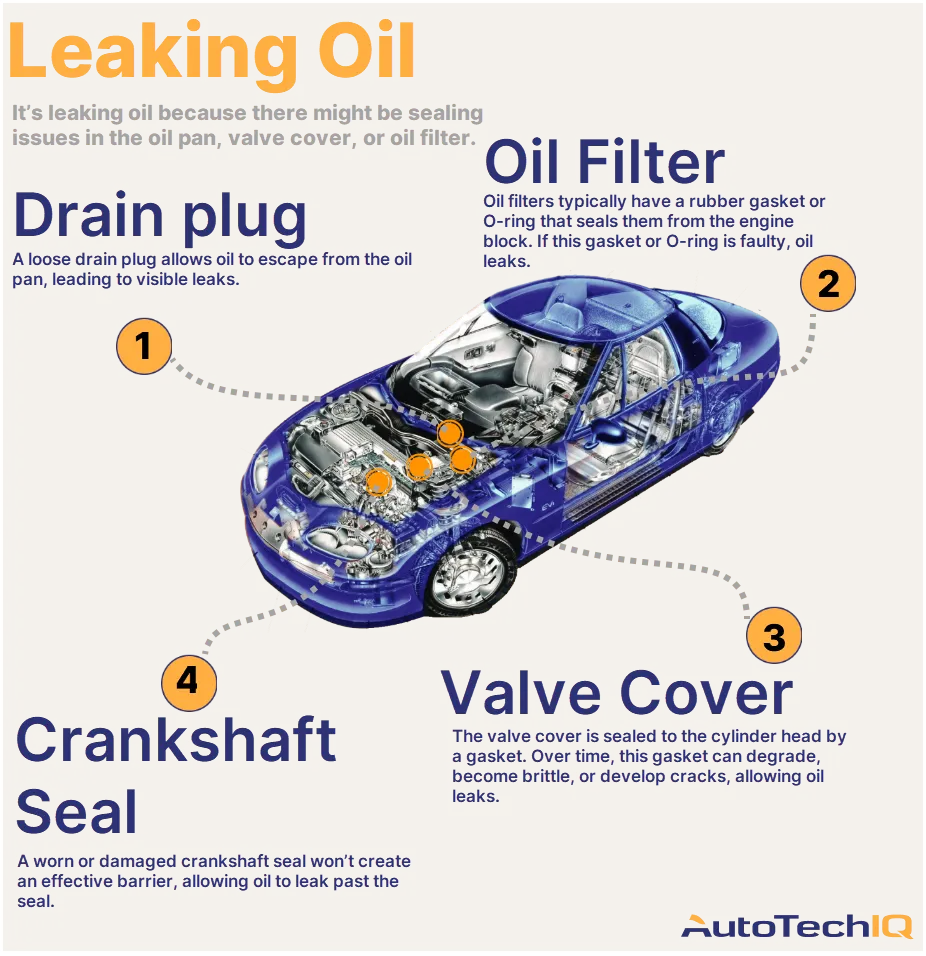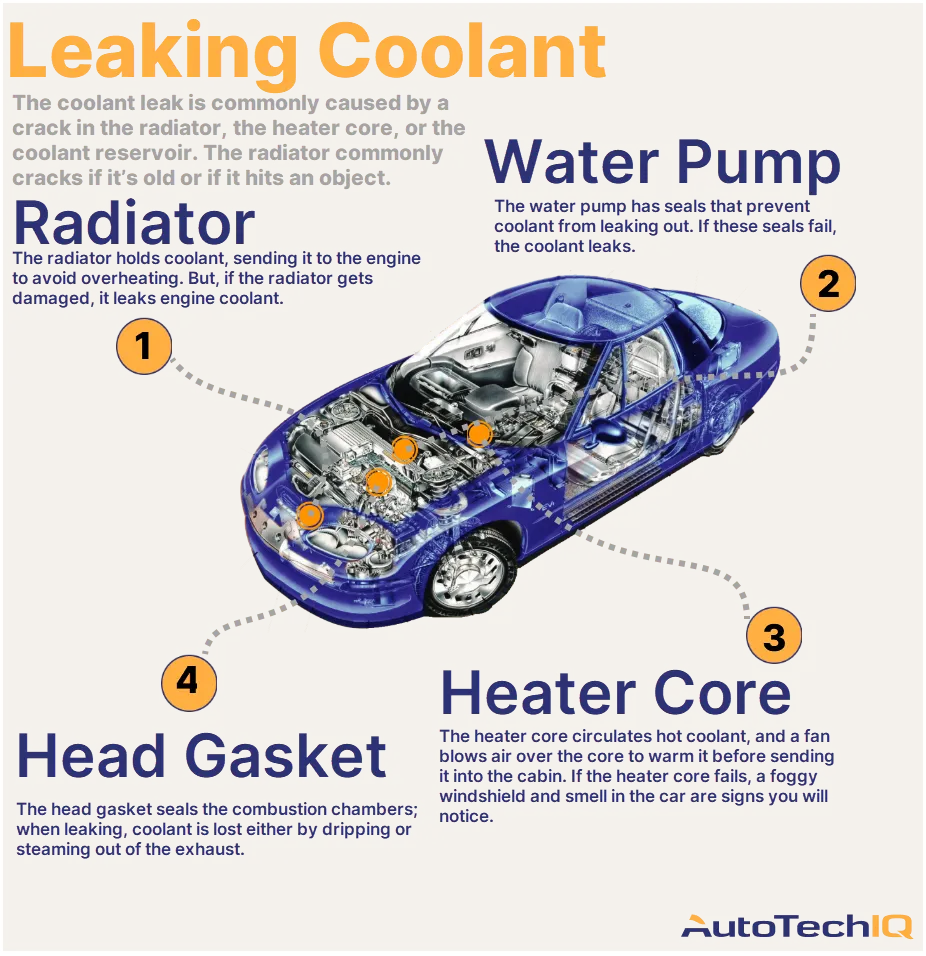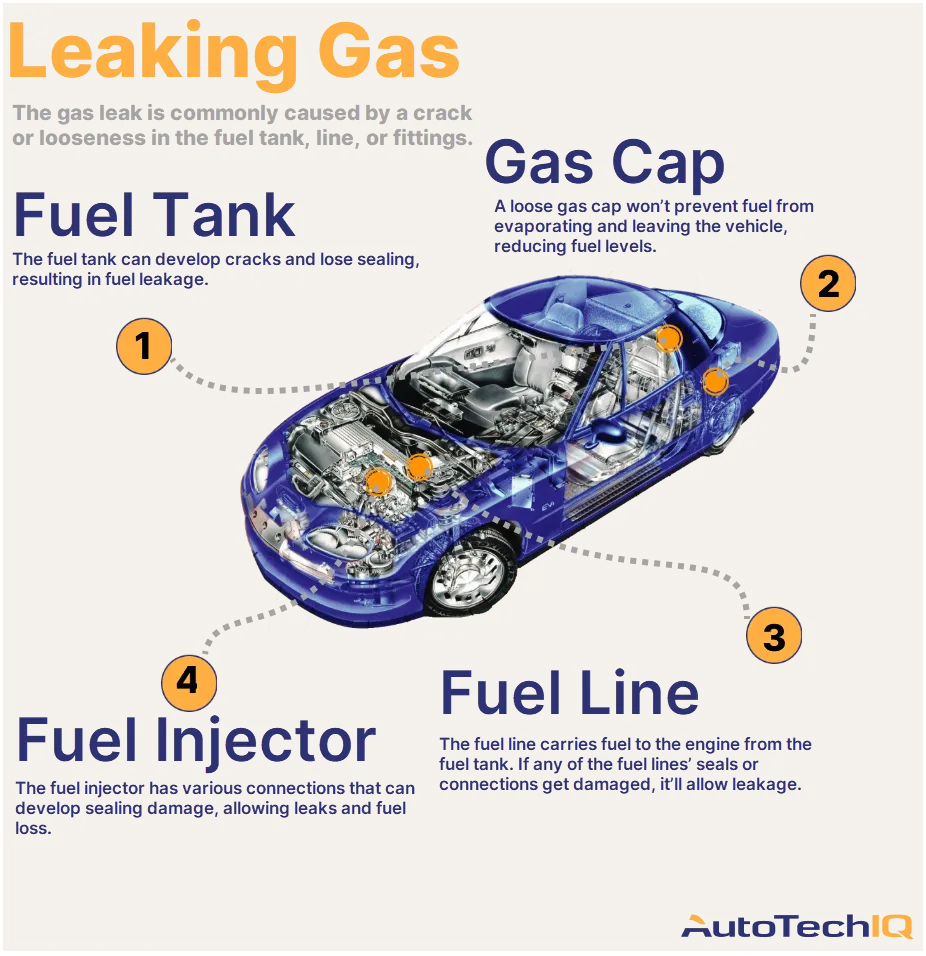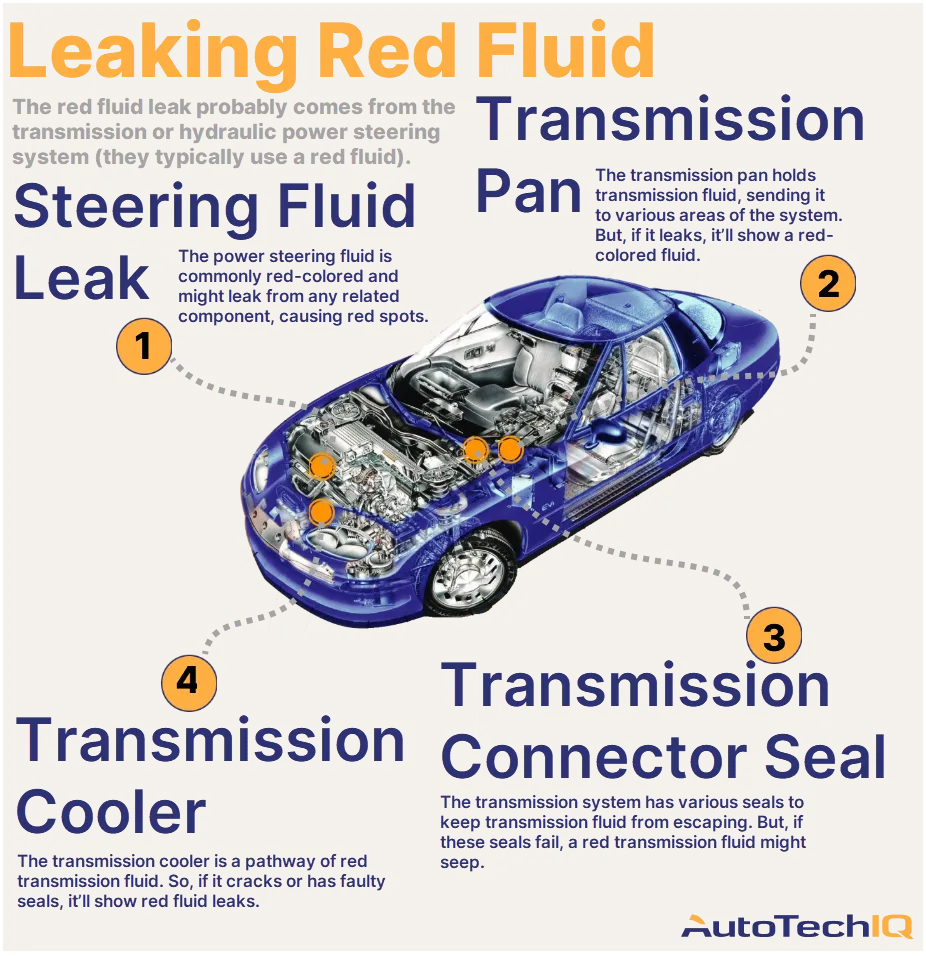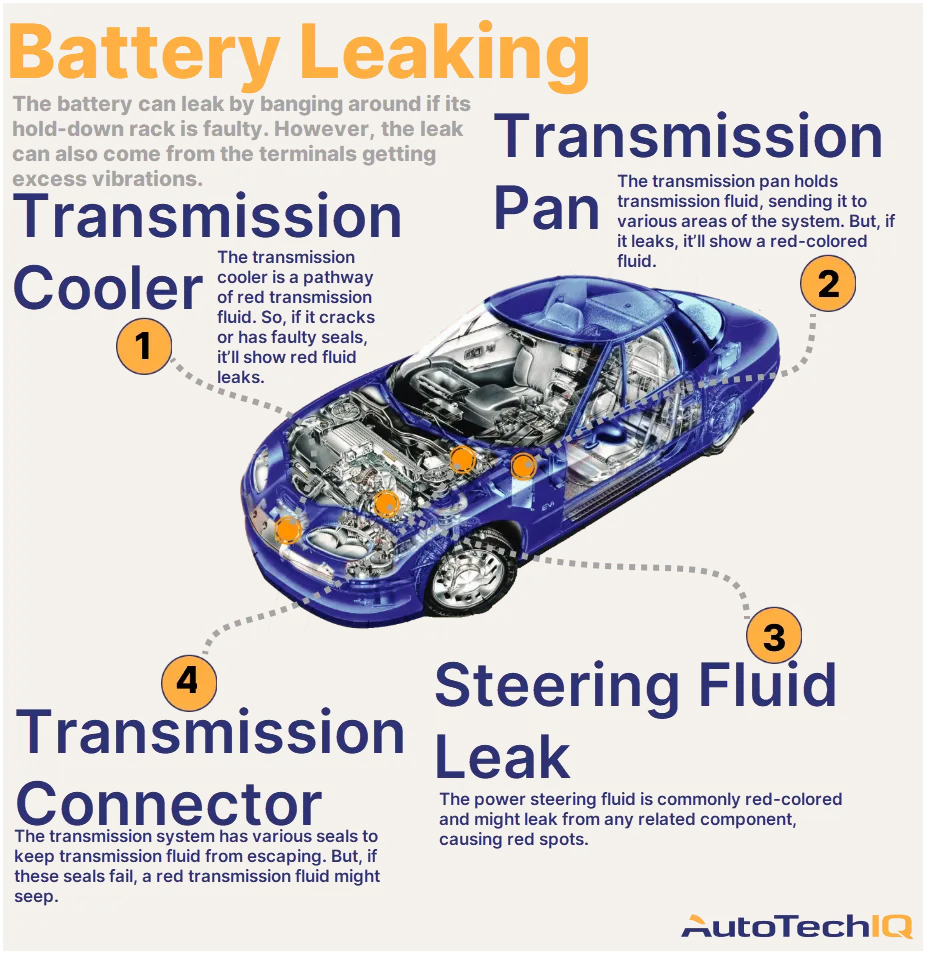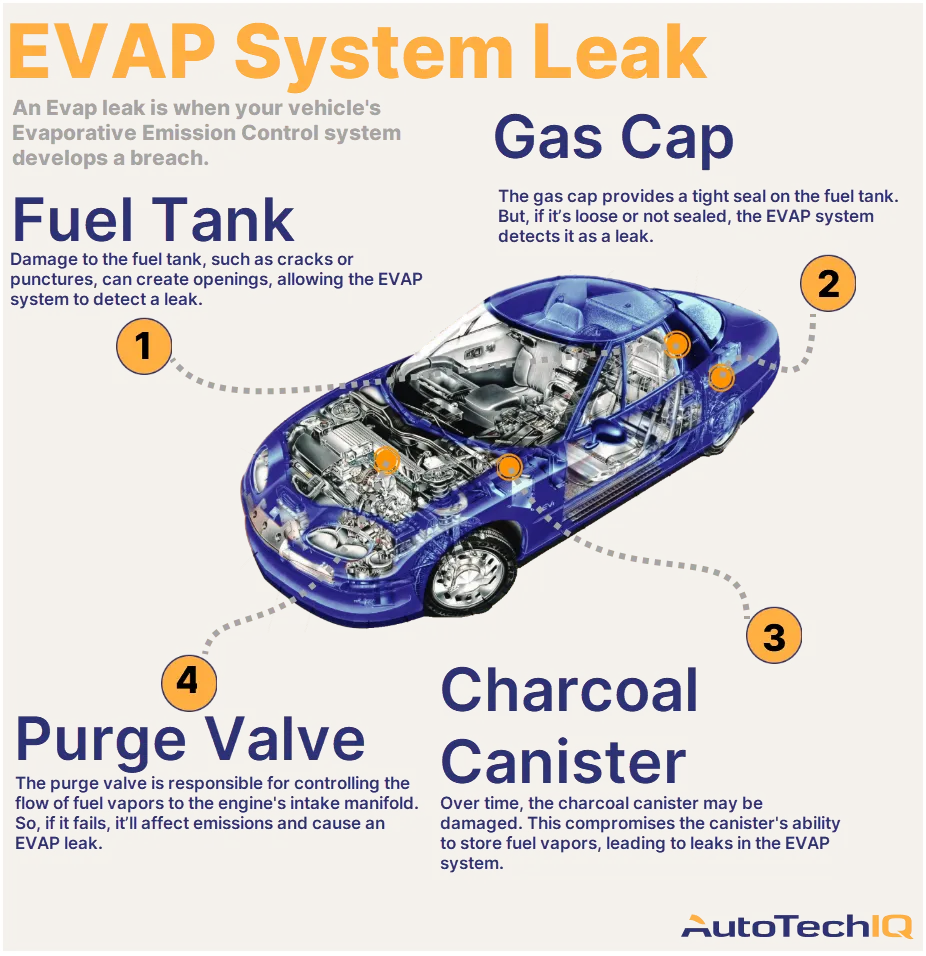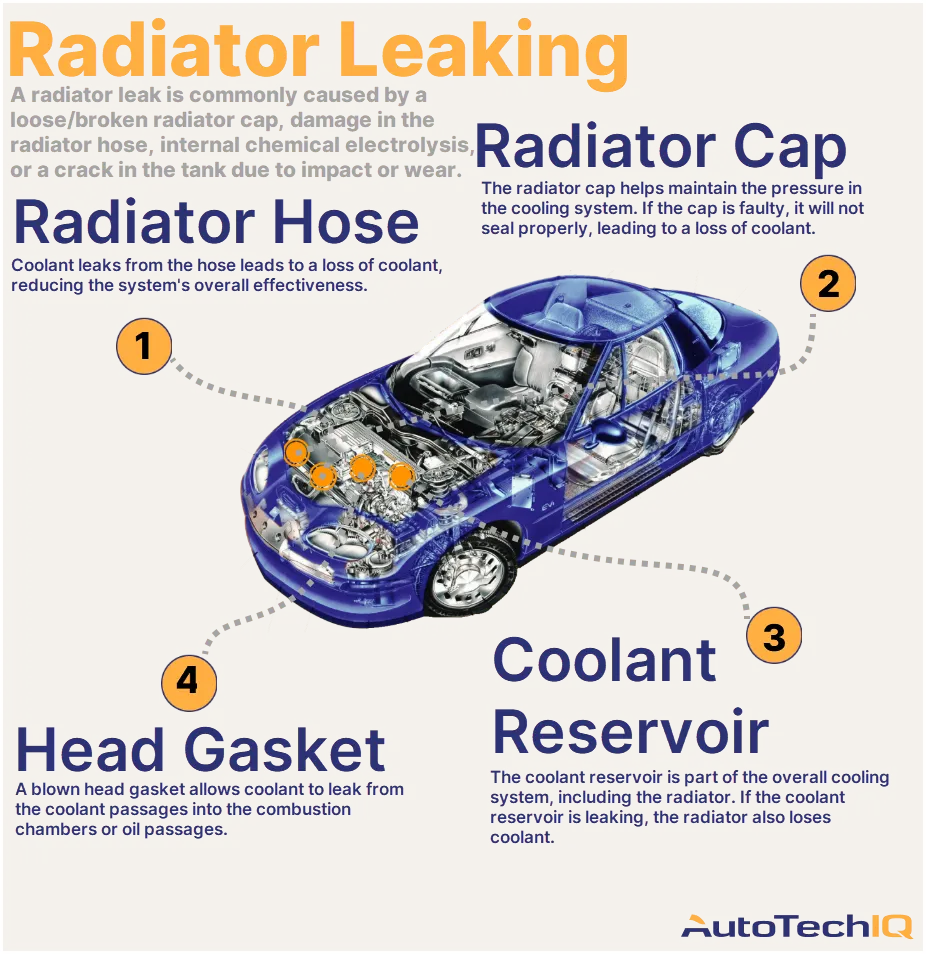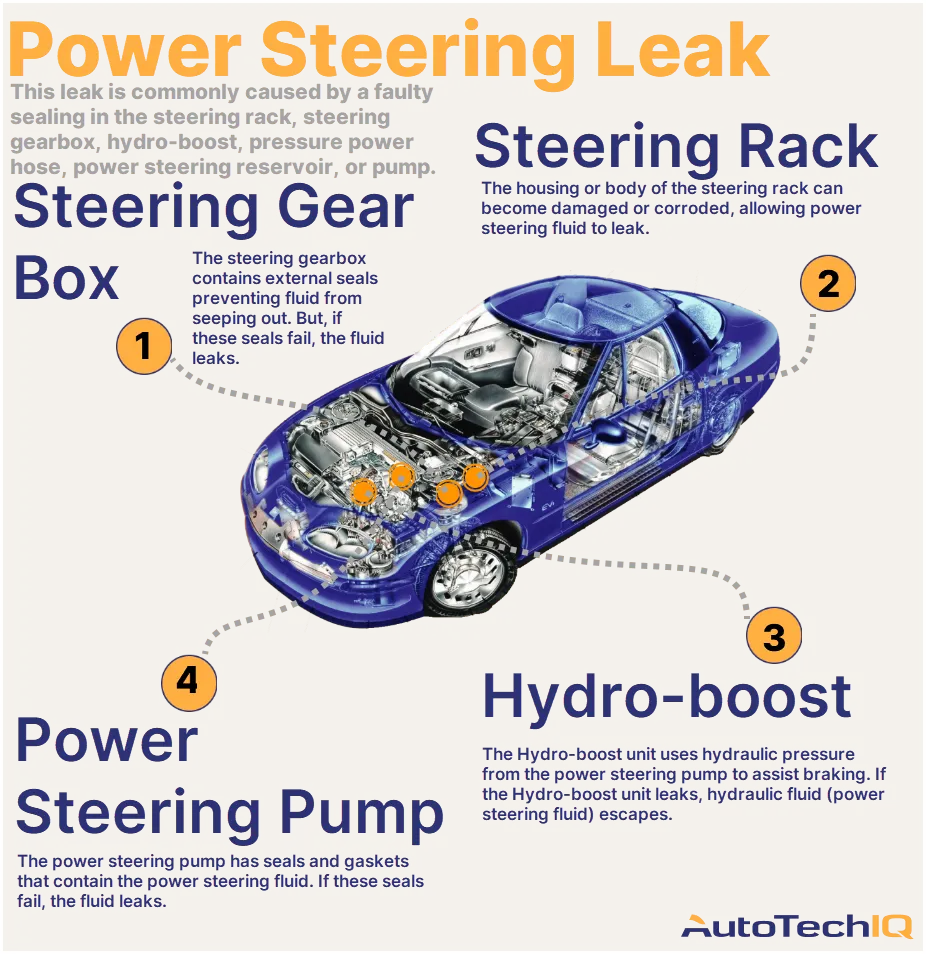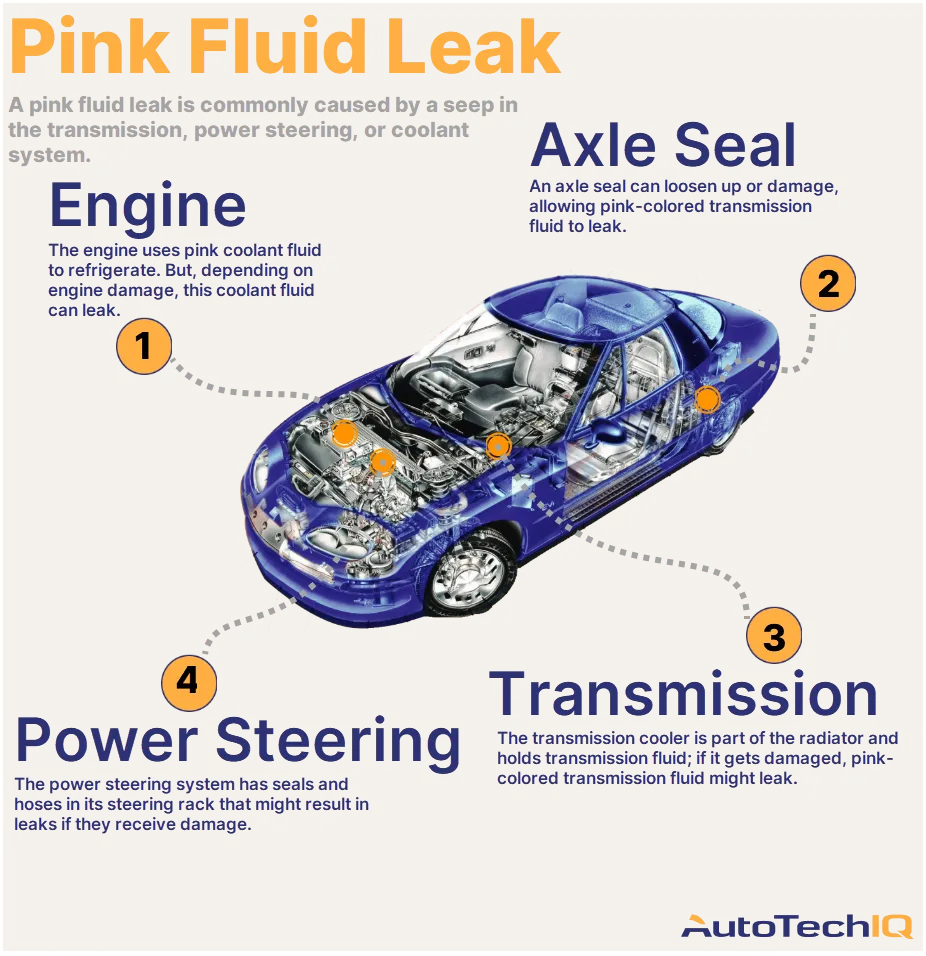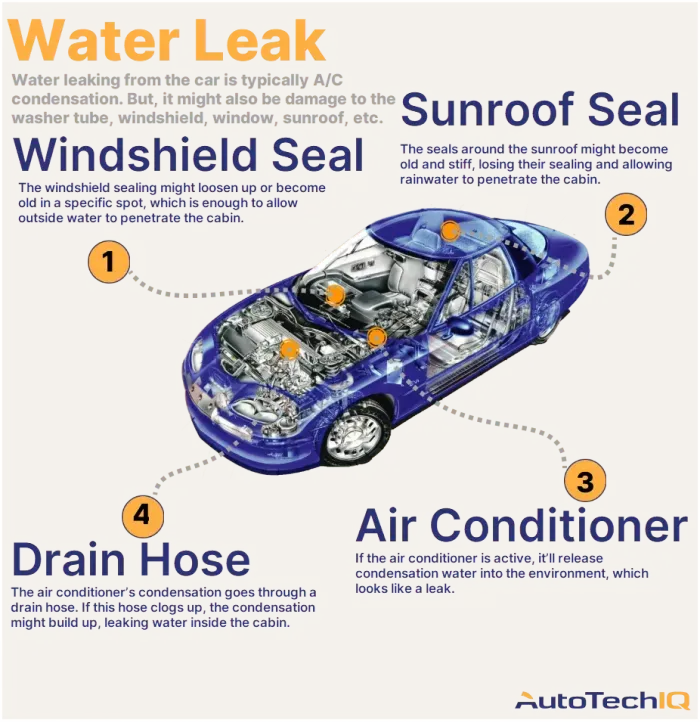
Is Your Car Leaking Water?
The water leak is caused by condensation in the air conditioning system. In this case, don’t sweat; the leak is actually a designed condensation release as long as it is not leaking into the passenger compartment. However, there could also be serious reasons, like a window washer tube leak, damaged windshield, window or door seals, or sunroof leak.
If you see a puddle under your vehicle, check if it's a vital fluid, like coolant or engine oil. Sometimes, it may just be water. While leaking water usually isn't as catastrophic, water leaks can damage your vehicle.
Keeping your vehicle's interior dry and sealed is the key to preventing water damage. Unfortunately, finding the source of the leak isn't always easy and sometimes requires a technical solution.
Watch out: Water leaking into your vehicle is likely to develop problems. Aside from damage to your headliner and carpet, water can disrupt and interfere with the car's electrical system, causing a short circuit. Moist environments also present the danger of mold or mildew inhalation.

